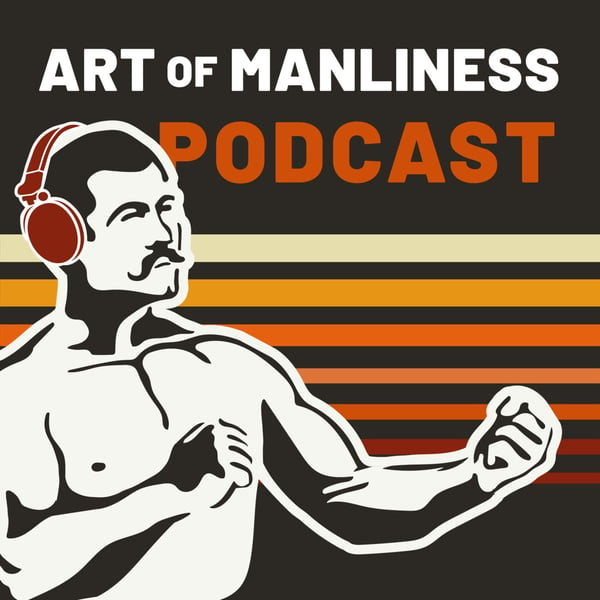#101: The Fighter Pilot Who Changed the Art of War With Robert Coram
The Art of Manliness
The Art of Manliness
4.7 • 14.5K Ratings
🗓️ 12 February 2015
⏱️ 38 minutes
🧾️ Download transcript
Summary
Transcript
Click on a timestamp to play from that location
| 0:00.0 | music |
| 0:15.0 | Brett McKay here and welcome to another edition of the Art of Manliness Podcast. |
| 0:19.0 | Now there are a lot of great military strategists in history that come to mind when you mentioned military strategy. |
| 0:25.0 | The most obvious one is Sun Zoo or the Art of War, thousands years ago. There's also Carl von Klauswitz. |
| 0:31.0 | But there's another one, one of the most greatest military thinkers and strategists since Sun Zoo. His name's John Boyd and he started his career as a fighter pilot during the Korean War. |
| 0:42.0 | And then he went on to revolutionize air tactics of the design of fighter plans. |
| 0:48.0 | He also went on to just develop these grand theories that are being used today in branches of the military around the world on how to win wars. |
| 0:56.0 | We've written about John Boyd on the site. He's one of the most fascinating characters I've ever read about and written about. |
| 1:01.0 | So today we have his biographer on named Robert Corum. He wrote this biography called Boyd, the fighter pilot who changed the art of war. |
| 1:08.0 | Today we're going to discuss John Boyd's contribution to military strategy, his life, his idiosyncrasies, his battles within the biarchicies of the Pentagon. |
| 1:18.0 | We're going to talk about what we can learn from Boyd on being a better man and also learn from his faults as well. |
| 1:25.0 | It's a fascinating discussion. I think you're really going to like this. So let's do this. |
| 1:33.0 | Robert Corum, welcome to the show. |
| 1:36.0 | I'm glad to be here. Thank you. |
| 1:38.0 | Okay, so for our listeners who aren't familiar with you and your work, can you tell us a little bit background about your career and what ultimately led you to writing a biography about an obscure military strategist that a lot of people know about named John Boyd. |
| 1:55.0 | When I was in college, I wrote for the student newspaper and some of my columns came to the attention of the people of the Atlanta Journal and I was offered a job there and was there for four or five years and left to freelance, right, Atlanta magazine wrote a number of magazine articles for most of the major national publication desk wire, the New Yorker. |
| 2:20.0 | And then in 1980, I went back to the newspaper this time of the Constitution. There were two separate newspapers at the time. |
| 2:27.0 | And after a couple of years, like every reporter, I wanted to write the Great American novels. So I left the paper and I wrote five novels before I ever published one. |
| 2:38.0 | I tried to read a long learning curve in this business. In 1988, I published the first novel and over the next 10 years, published seven novels and three nonfiction books. And I got to tell you, except for one of those books, they were all somewhere south of mediocre. |
| 2:55.0 | And by 1999, I was 62 years old. My career was in the toilet. My agent was about to fire me. And one of John Boyd's friends, who might have known for 10 to 15 years, and he had been after me for most of those 15 years to write a biography of boy, they contacted me again. And he said, it's time to write the biography of boy. And not having anything else to do at the time. |
| 3:24.0 | I thought I would go to Washington and talk to a couple of boyfriends, primarily to get boyfriends, Chuck Spenney, who was a good friend by the end, to get him to leave me alone about this. |
| 3:37.0 | I didn't think it was much of a book. Chuck was big in the Hebrew worship. But I went to Washington and talked to Tom Christie and Pierre Spre and it linked to Chuck. And I realized, this is one of the biggest stories I've ever come across. So I wrote a proposal and sent it off. |
... |
Please login to see the full transcript.
Disclaimer: The podcast and artwork embedded on this page are from The Art of Manliness, and are the property of its owner and not affiliated with or endorsed by Tapesearch.
Generated transcripts are the property of The Art of Manliness and are distributed freely under the Fair Use doctrine. Transcripts generated by Tapesearch are not guaranteed to be accurate.
Copyright © Tapesearch 2025.

